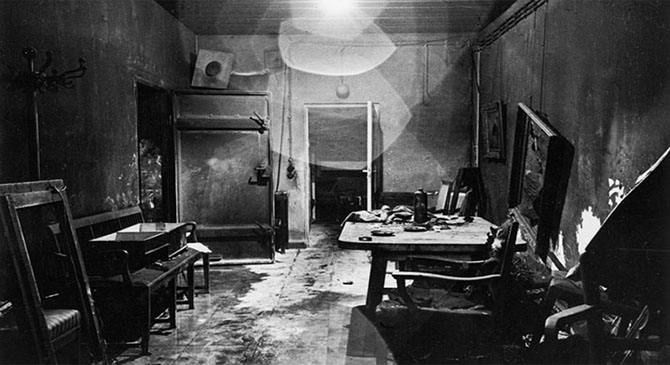In the spring of 1945, the streets of Berlin witnessed the savage fighting between German and Russian troops resulting in massive casualties and destruction. Towards the end, it became increasingly clear that the Third Reich was about to fall. But nothing quite marked their true end more than finding the bodies of Adolf Hitler and Eva Braun deep within a solid underground bunker on April 30, 1945.
Shortly after the 2-week battle, 33-year-old William Vandibert (LIFE photographer) visited Berlin’s devastated landscape to document the ruins. Here are a few of the haunting photos he took. Take a look.
“This is what was left of Oberwallstrasse, which is located in central Berlin. This area received an incredible amount of fighting and damage between Russian and German troops in the spring of 1945.” (via SlipTalk)
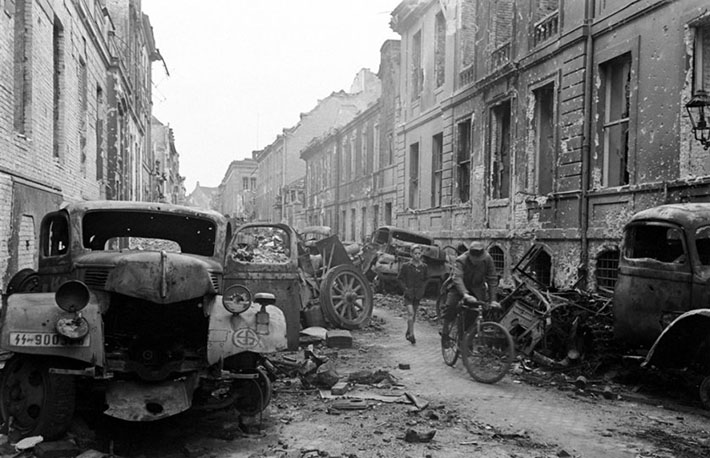
William Vandivert
Because of the destruction, many areas in Berlin had no power. Vandibert had to use candles for the lighting in many of his shots inside the bunker.
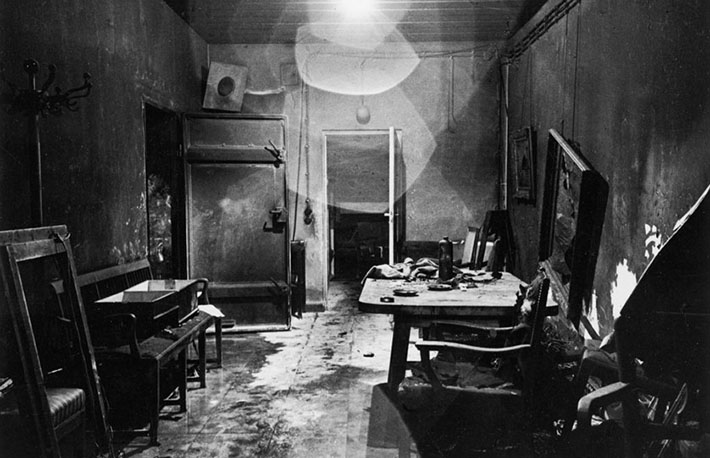
William Vandivert
A 16th century painting that was stolen from a museum in Milan, Italy.
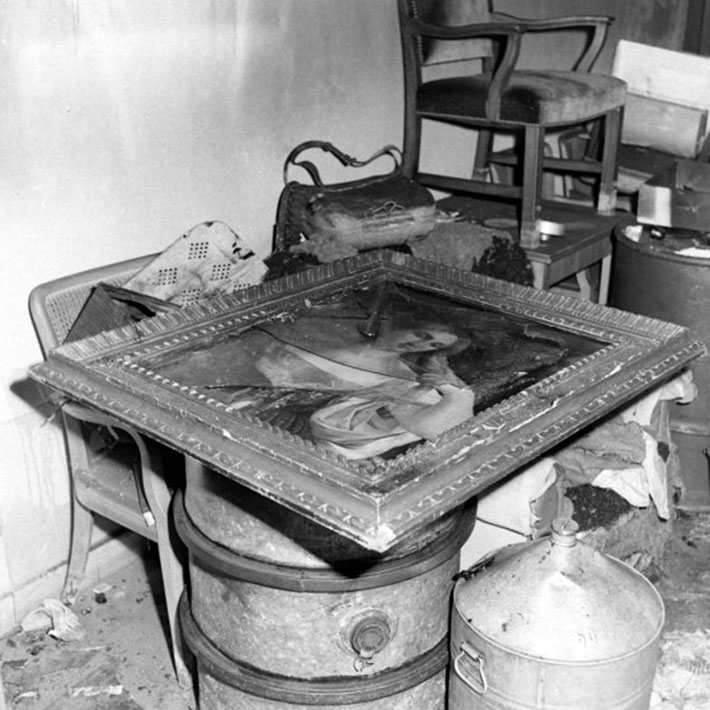
William Vandivert
War correspondents examine a couch inside Hitler’s bunker that is stained with a large amount of blood on the arm and cushion.
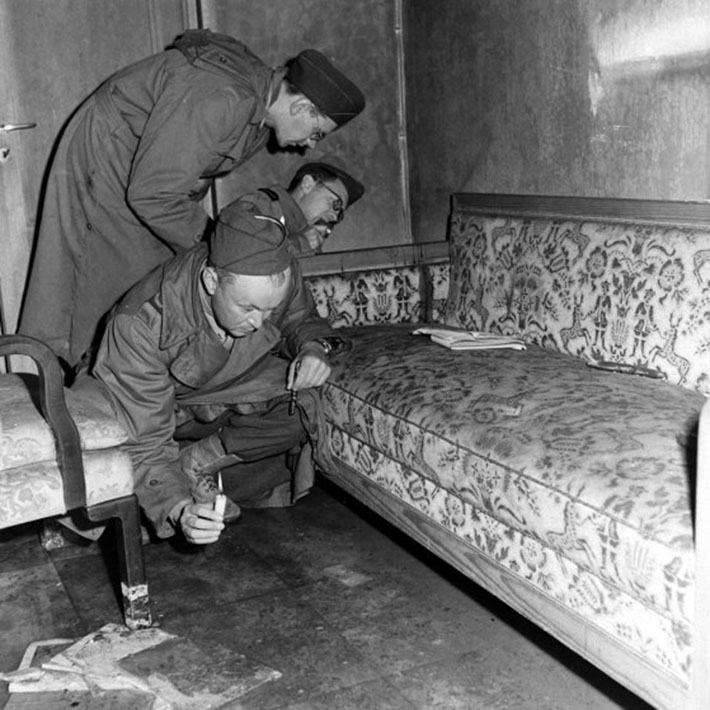
William Vandivert
Some furniture and a large tank of gas that were found abandoned inside the bunker.
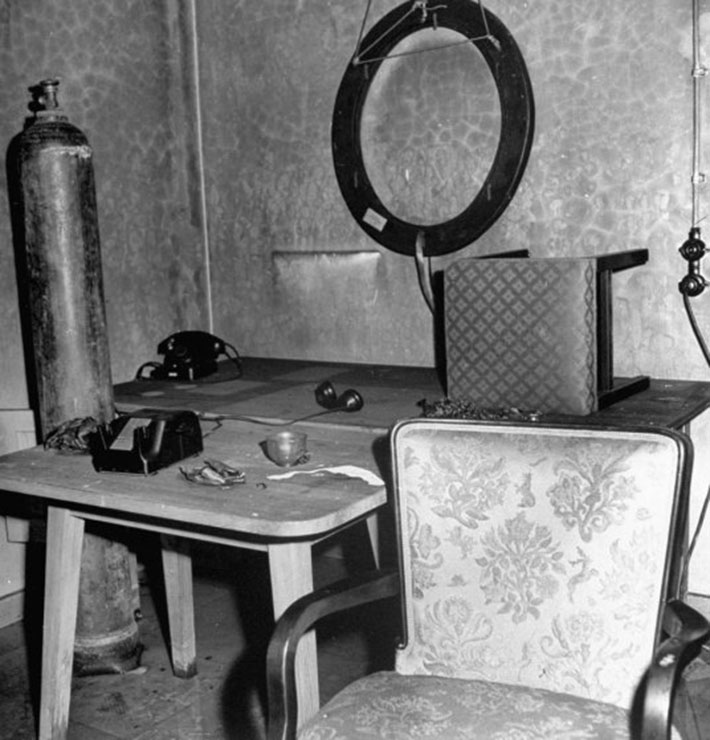
William Vandivert
News reports and stories dated April 29, 1945, the day before Hitler and Eva killed themselves.

William Vandivert
A young Russian soldier poses inside Adolf Hitler’s bunker shortly after The Battle of Berlin.
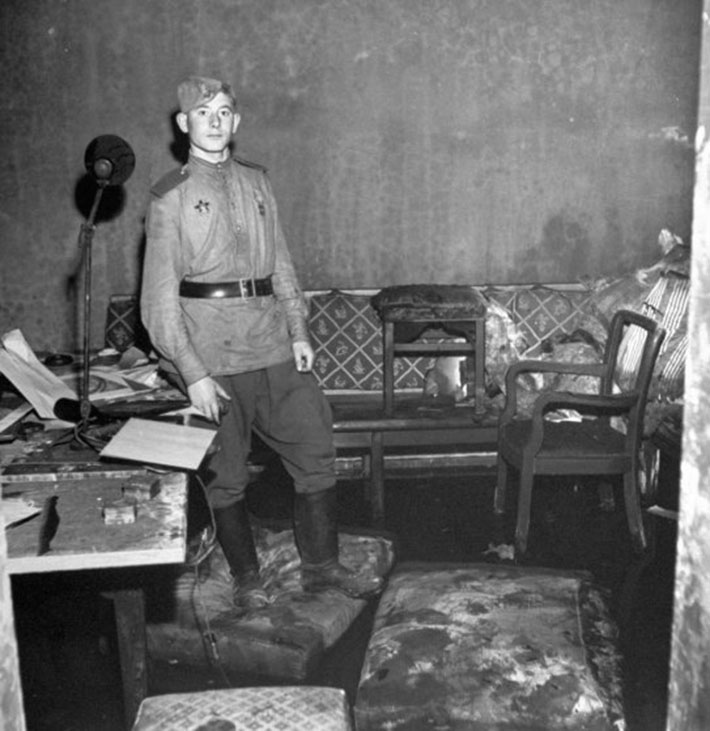
William Vandivert
This was a desk used by Adolf Hitler and his associates.

William Vandivert
An SS officer’s hat that has obviously been through battle. The infamous death’s-head emblem is visible on the front.
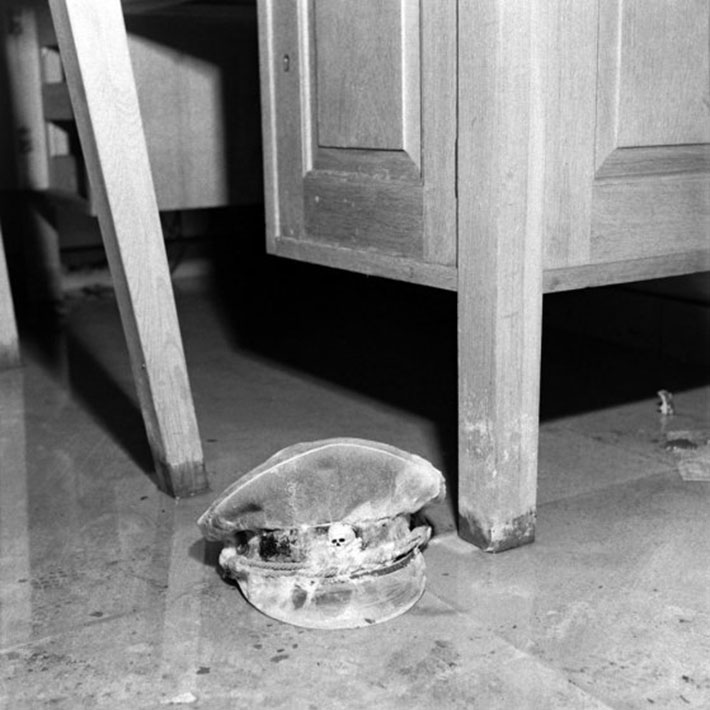
William Vandivert
A safe that was found inside Hitler’s bunker. It was obviously cut open and looted following the battle.
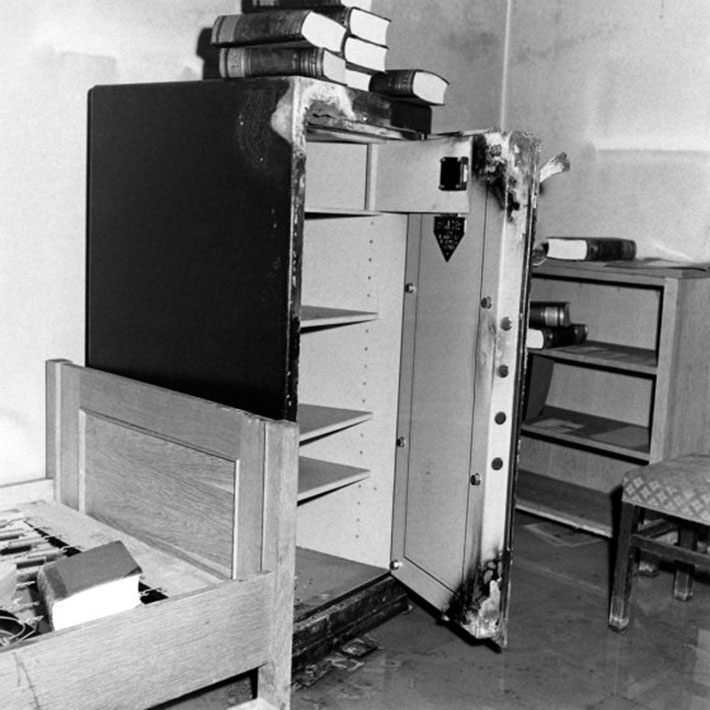
William Vandivert
A LIFE Magazine correspondent sifts through debris in a shallow pit in the garden of the Reich Chancellery. He was told that this was where the bodies of Hitler and Eva were burned.
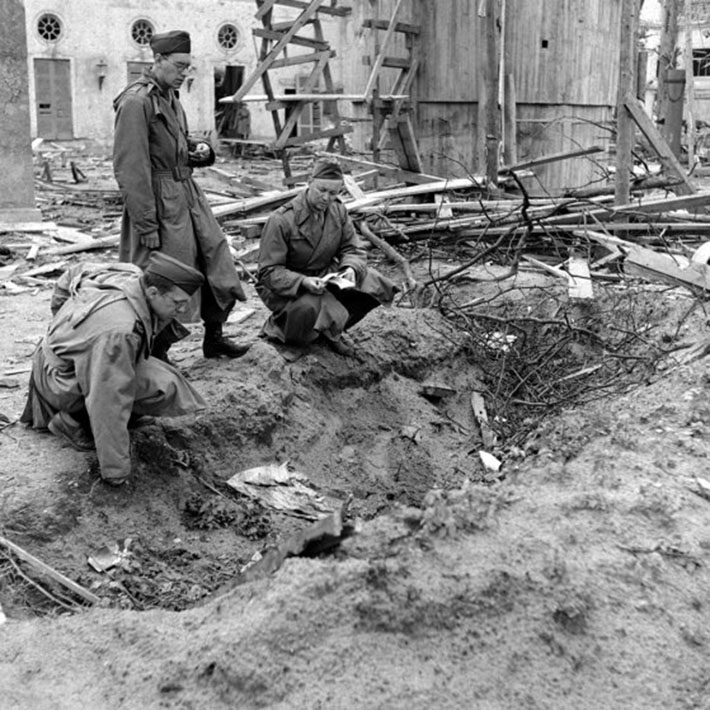
William Vandivert
The destroyed gardens of the Reich Chancellery.
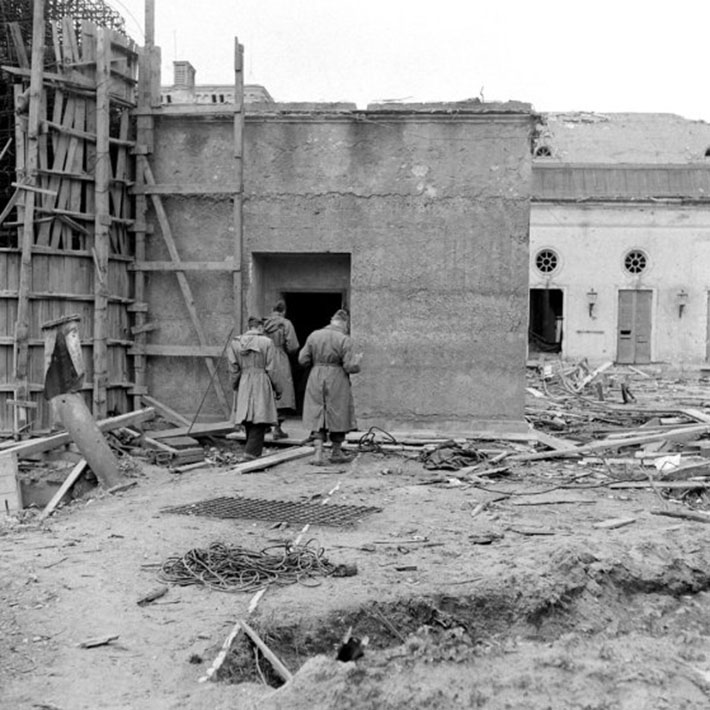
William Vandivert
A heavily damaged pillbox that has been nearly destroyed by gunfire. This is located right outside of Hitler’s bunker.

William Vandivert
A man shows the hinges that held the massive door leading into Hitler’s bunker. The hinges were completely destroyed in order to gain entry into the bunker.
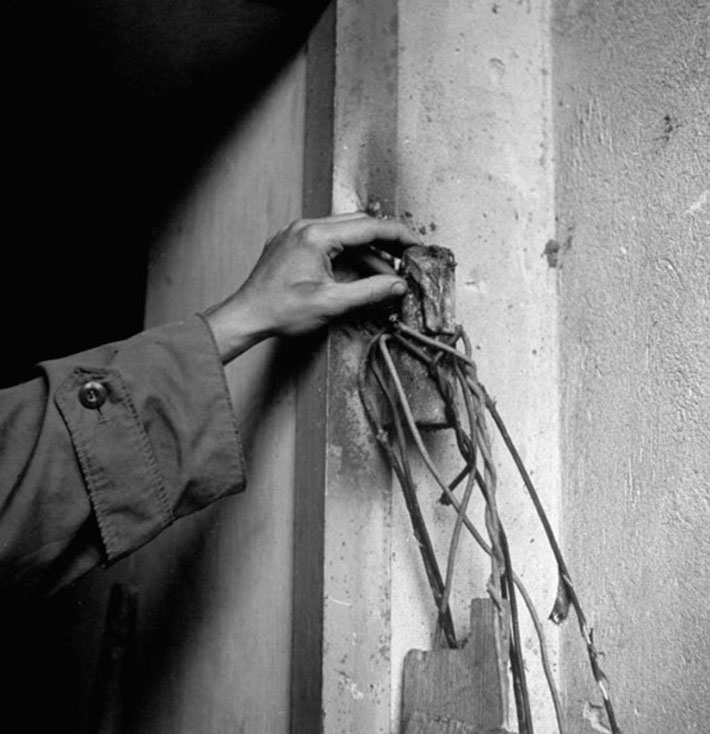
William Vandivert
The photographer was told that these gas cans were supposedly the cans used to burn the bodies of Hitler and Eva.
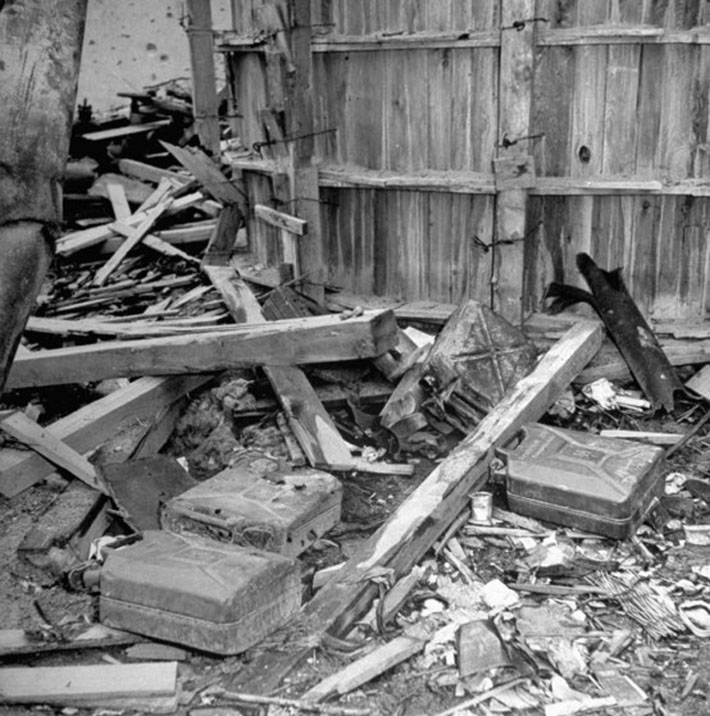
William Vandivert
A civilian helps these Russian soldiers move a large bronze Nazi Party eagle that was once above a doorway leading inside the Reich Chancellery.
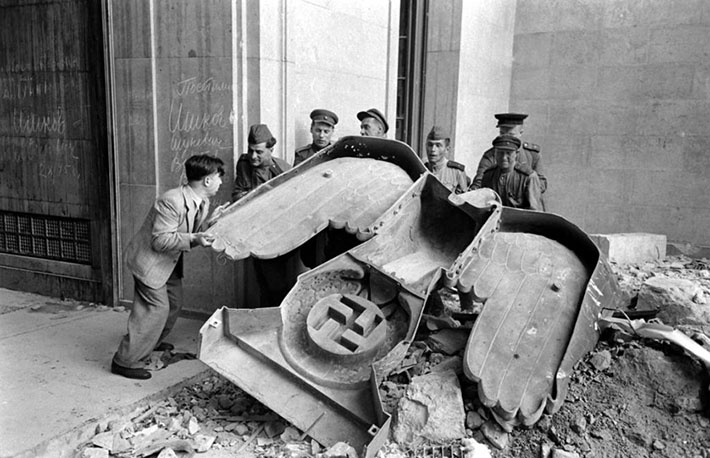
William Vandivert
An American soldier is seen mocking the Nazi salute inside the destroyed structure of the Berliner Sportspalast (Sports Palace).
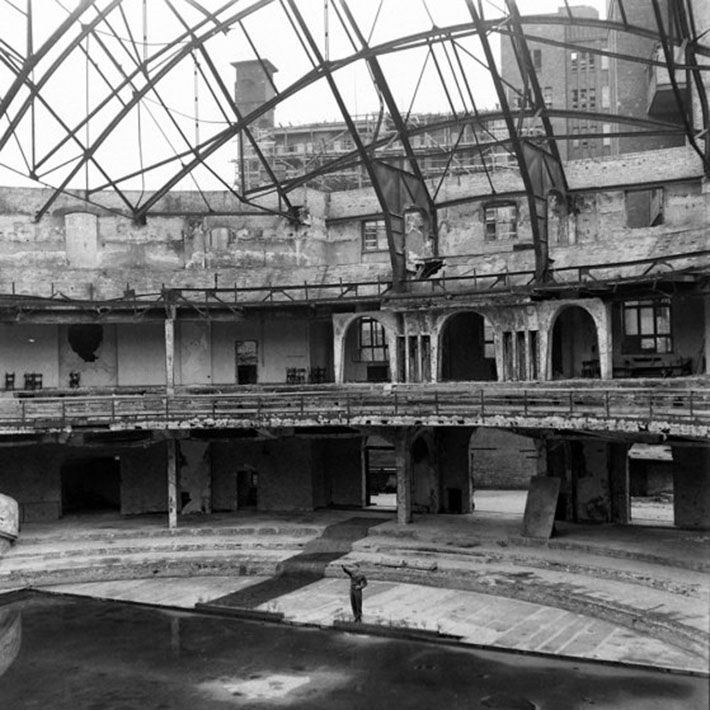
William Vandivert
It was tradition for soldiers to either commemorate their comrades or insult their foes with graffiti. This was taken at the Reichstag in Berlin.
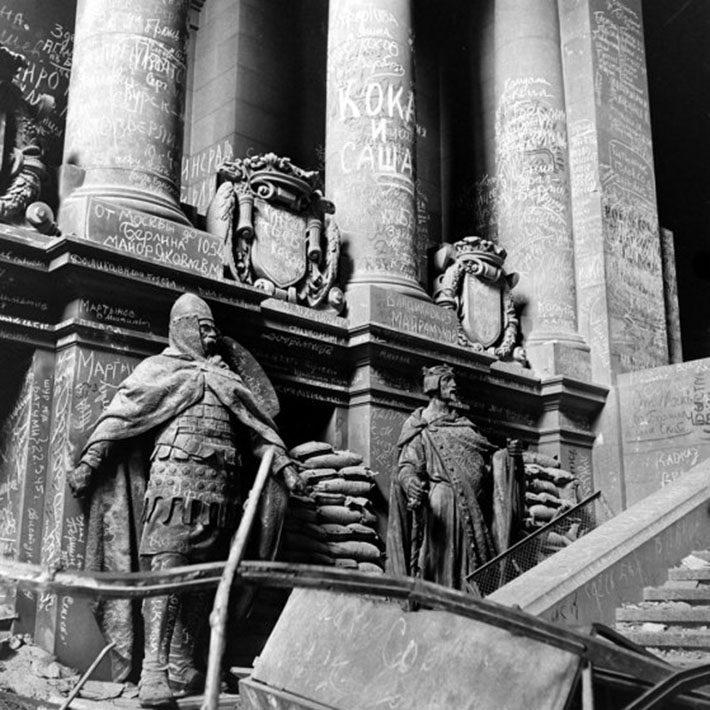
William Vandivert
Found outside the Reich Chancellery was a crushed globe and a fallen bust of Hitler’s head, perfectly describing Berlin and Hitler’s reign in 1945.
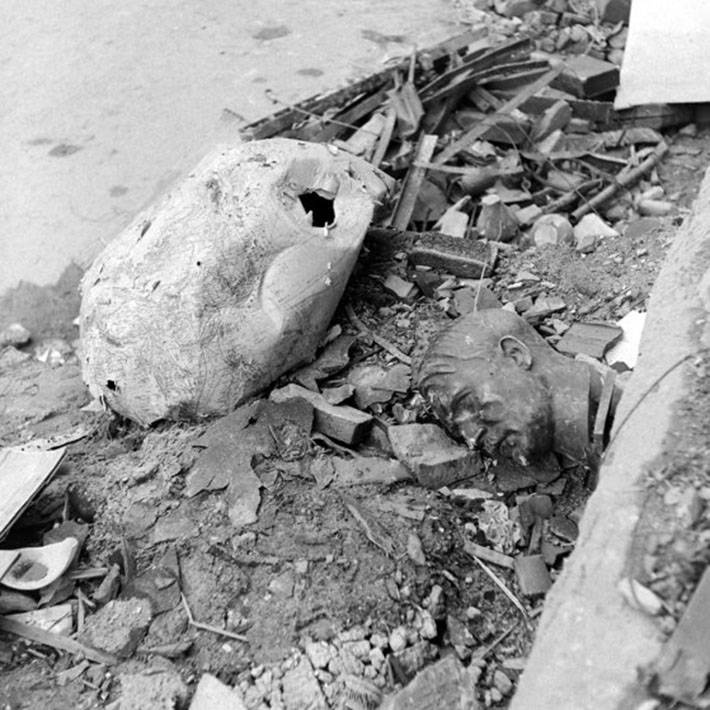
William Vandivert

